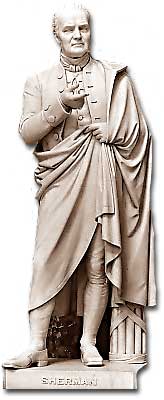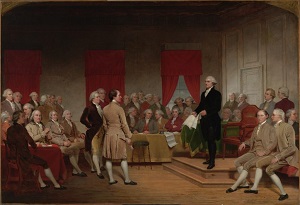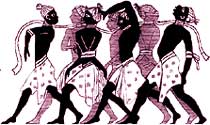What Compromises had to be made for the Constitution

15d. Constitution Through Compromise

Roger Sherman was the only man to sign all iv of the of import Revolutionary documents: The Clan of 1774, the Declaration of Independence, the Articles of Confederation, and the Constitution.
"Representation" remained the core issue for the Philadelphia Convention. What was the all-time way for dominance to be delegated from the people and u.s.a. to a strengthened fundamental government?
After still more securely divided argument, a proposal put forward by delegates from Connecticut (a small population state ), struck a compromise that narrowly got canonical. They suggested that representatives in each house of the proposed bicameral legislature be selected through different means. The upper house (or Senate) would reflect the importance of state sovereignty by including two people from each land regardless of size. Meanwhile, the lower firm (the House of Representatives) would have different numbers of representatives from each state determined past population. Representation would be adjusted every ten years through a federal census that counted every person in the land.
By coming up with a mixed solution that balanced country sovereignty and pop sovereignty tied to bodily population, the Constitution was forged through what is known as the Connecticut Compromise. In many respects this compromise reflected a victory for modest states, but compared with their dominance in the Congress under the Articles of Confederation it is clear that negotiation produced something that both small and large states wanted.
Other major bug all the same needed to be resolved, even so, and, over again, compromise was required on all sides. One of the major issues concerned elections themselves. Who would be immune to vote? The dissimilar state constitutions had created different rules about how much holding was required for white men to vote. The delegates needed to figure out a solution that could satisfy people with many different ideas about who could have the franchise (that is, who could exist a voter).

Washington every bit Statesman at the
Constitutional Convention
Junius Brutus Stearns, 1856
For the popular lower house, any white man who paid taxes could vote. Thus, even those without holding, could vote for who would represent them in the House of Representatives. This expanded the franchise in some states. To balance this opening, the two Senators in the upper house of the national government would be elected by the state legislatures. Finally, the President (that is, the executive branch) would exist elected at the land level through an electoral college whose numbers reflected representation in the legislature.
To modern eyes, the most stunning and disturbing constitutional compromise by the delegates was over the issue of slavery. Some delegates considered slavery an evil establishment and George Mason of Virginia even suggested that the trans-Atlantic slave trade be made illegal past the new national rules. Delegates from South Carolina and Georgia where slavery was expanding rapidly in the belatedly-18th century angrily opposed this limitation. If any limitations to slavery were proposed in the national framework, then they would leave the convention and oppose its proposed new plan for a stronger central regime. Their trigger-happy opposition immune no room for compromise and as a result the issue of slavery was treated equally a narrowly political, rather than a moral, question.
The delegates agreed that a strengthened union of u.s. was more than important than the Revolutionary ideal of equality. This was a businesslike, besides as a tragic, constitutional compromise, since it may take been possible (as suggested by George Bricklayer'due south comments) for the slave state of Virginia to accept some limitations on slavery at this signal.

The slave trade was always a controversial issue in the history of the United States.
The proposed constitution actually strengthened the power of slave states in several important respects. Through the "fugitive clause," for example, governments of free states were required to help recapture runaway slaves who had escaped their masters' states. Every bit disturbing was the "three-fifths formula" established for determining representation in the lower house of the legislature. Slave states wanted to have additional political power based on the number of human beings that they held equally slaves. Delegates from gratis states wouldn't allow such a blatant manipulation of political principles, but the inhumane compromise that resulted meant counting enslaved persons as iii-fifths of a free person for the sake of calculating the number of people a state could elect to the Business firm of Representatives.

Later on hot summer months of difficult debate in Philadelphia from May to September 1787, the delegates had fashioned new rules for a stronger central government that extended national ability well across the scope of the Articles of Confederation. The Constitution created a national legislature that could pass the supreme law of the land, could raise taxes, and with greater command over commerce. The proposed rules also would restrict state actions, especially in regard to passing pro-debtor laws. At the stop of the long process of creating the new plan, thirty-eight of the remaining forty-one delegates showed their back up past signing the proposed Constitution. This minor group of national superstars had created a major new framework through hard work and compromise.
At present another challenge lay ahead. Could they convince the people in the states that this new plan was worth accepting?
QUIZ Time: Constitution Quiz
![]()
If you like our content, please share it on social media!

![]()
Source: https://www.ushistory.org/us/15d.asp
0 Response to "What Compromises had to be made for the Constitution"
Post a Comment